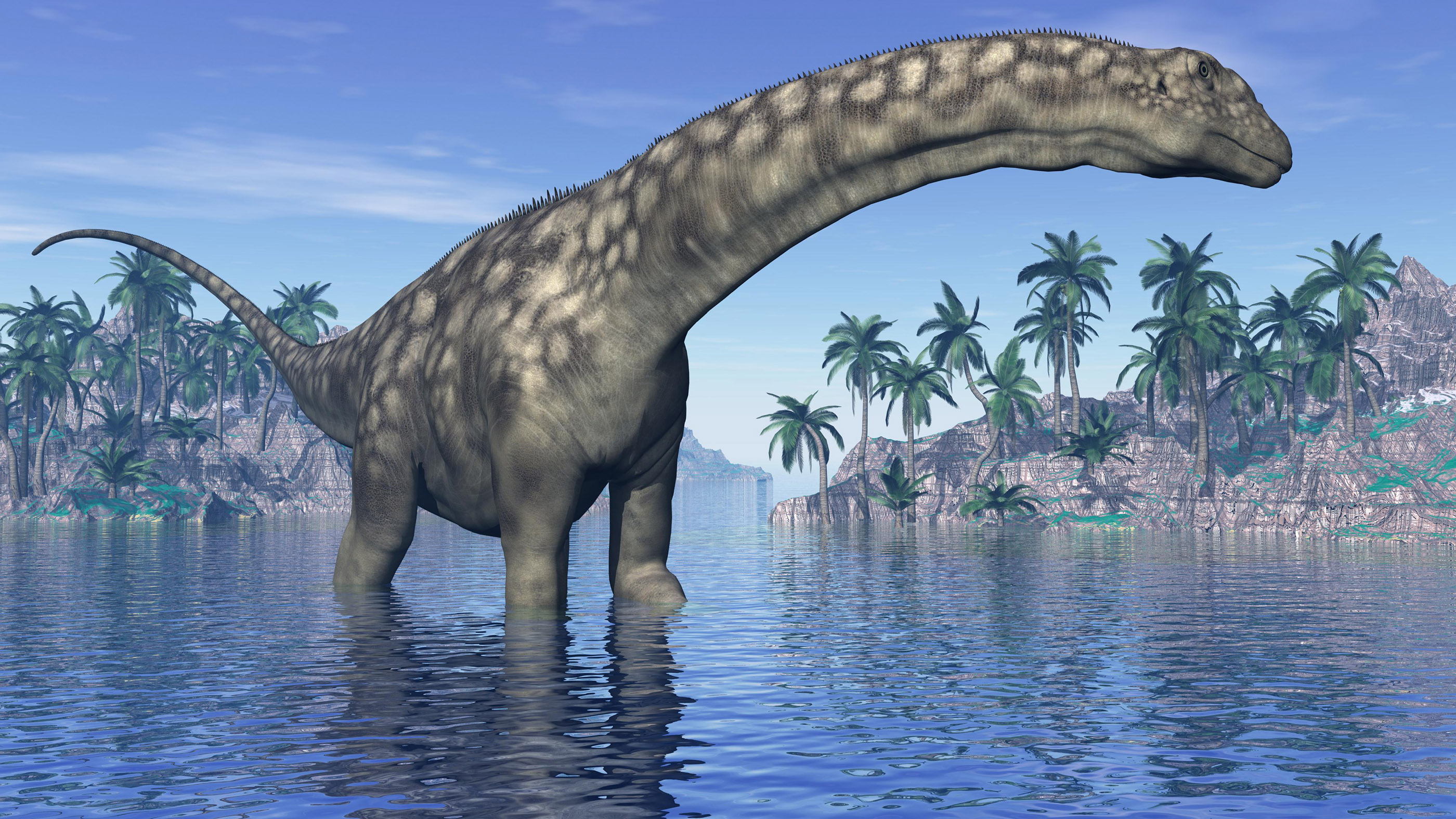Massive new dinosaur might be the largest creature to ever roam Earth
The unnamed titanosaur could have weighed more than 69 tons.

The 98 million-year-old remains of what might be the largest animal to walk Earth — a long-necked titanosaur dinosaur — were recently unearthed in Argentina.
The remains of the unnamed dinosaur were first discovered in 2012 in Neuquén Province of northwest Patagonia, but have still not been fully excavated. However, the bones that have been unearthed so far suggest the ancient behemoth was likely a titanosaur, possibly the largest one on record. Titanosaurs were amongst the largest sauropods — long-necked, plant-eating giant dinos — and lived from the late Jurassic period (163.5 million to 145 million years ago) to the end of the Cretaceous period (145 million to 66 million years ago).
"Given the measurements of the new skeleton, it looks likely that this is a contender for one of the largest, if not the largest, sauropods that have ever been found," Paul Barrett, a paleobiologist at the Natural History Museum in London who was not involved in the study, told Live Science.
Related: The 10 coolest dinosaur findings of 2020
Not enough of the remains have been uncovered for the researchers to declare this dinosaur as a new species or assign it to an already known one. However, the researchers are confident that once the excavation is complete, they'll be able to classify it as a completely new species.
"The place of the finding is very hard to access, so the logistics is pretty complicated," lead study author Alejandro Otero, a paleontologist at La Plata Museum in Argentina, told Live Science. "But we expect to return there after the pandemic situation."
The remains themselves date to about 98 million years ago, meaning the creature lived during the Cretaceous period.
Get the world’s most fascinating discoveries delivered straight to your inbox.
A giant among giants
In 1993, another titanosaur called Argentinosaurus huinculensis claimed the title of largest land-based dino, but was later superceded by the even larger titanosaur Patagotitan mayorum in 2014. However, it's challenging to determine which species was the heaviest dinosaur — Argentinosaurus is known from just 13 fossilized bones, and Patagotitan's weight was based on a composite of six individuals, Live Science previously reported.
Right now, the researchers can't say how large the new titanosaur was, given that the long limb bones used to make such estimates, such as the humerus and femur, have not yet been excavated. However, analyses of the bones that have been found — including 24 vertebrae of the tail and parts of the pelvic and pectoral girdle — show that it was most likely the largest of the titanosaurs.
"The specimen is considered one of the largest sauropods ever found, probably exceeding Patagotitan in size," the researchers wrote.
Patagotitan was roughly 50 feet (15 meters) tall and weighed 69 tons (62 metric tons), which is equivalent to the weight of nearly a dozen Asian elephants.
"It is a huge dinosaur, but we expect to find much more of the skeleton in future field trips, so we'll have the possibility to address with confidence how big it really was," Otero said.
The newly discovered titanosaur is just one of many sauropod fossils uncovered in South America, including Dreadnoughtus and Sarmientosaurus.
These have helped to fill in multiple knowledge gaps surrounding these giants and also raise questions about how they grew so big.
"This new skeleton provides yet another example of sauropods pushing at the extremes of what's possible with respect to maximum animal size on land," Barrett said.
The study was published online Jan. 12 in the journal Cretaceous Research.
Originally published on Live Science.

Harry is a U.K.-based senior staff writer at Live Science. He studied marine biology at the University of Exeter before training to become a journalist. He covers a wide range of topics including space exploration, planetary science, space weather, climate change, animal behavior and paleontology. His recent work on the solar maximum won "best space submission" at the 2024 Aerospace Media Awards and was shortlisted in the "top scoop" category at the NCTJ Awards for Excellence in 2023. He also writes Live Science's weekly Earth from space series.


